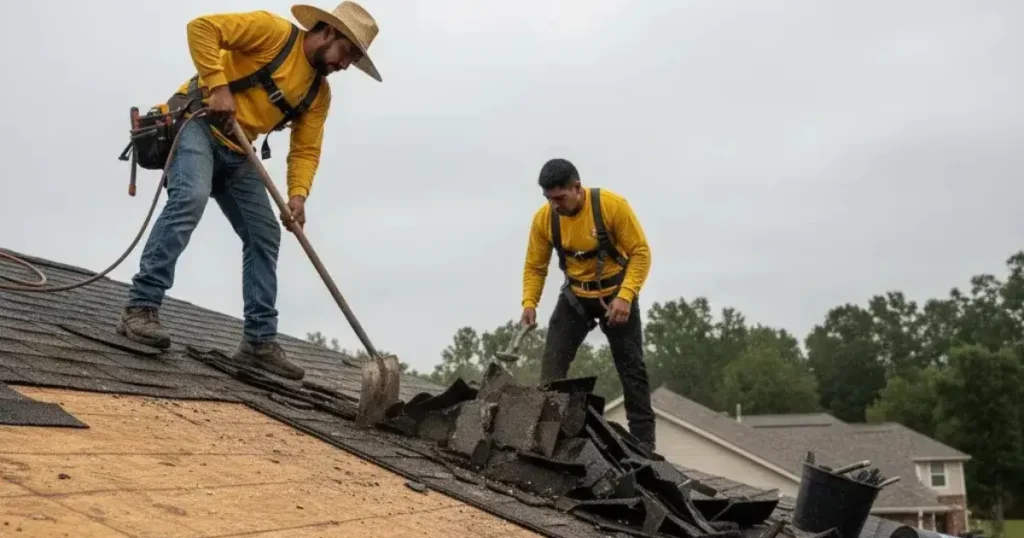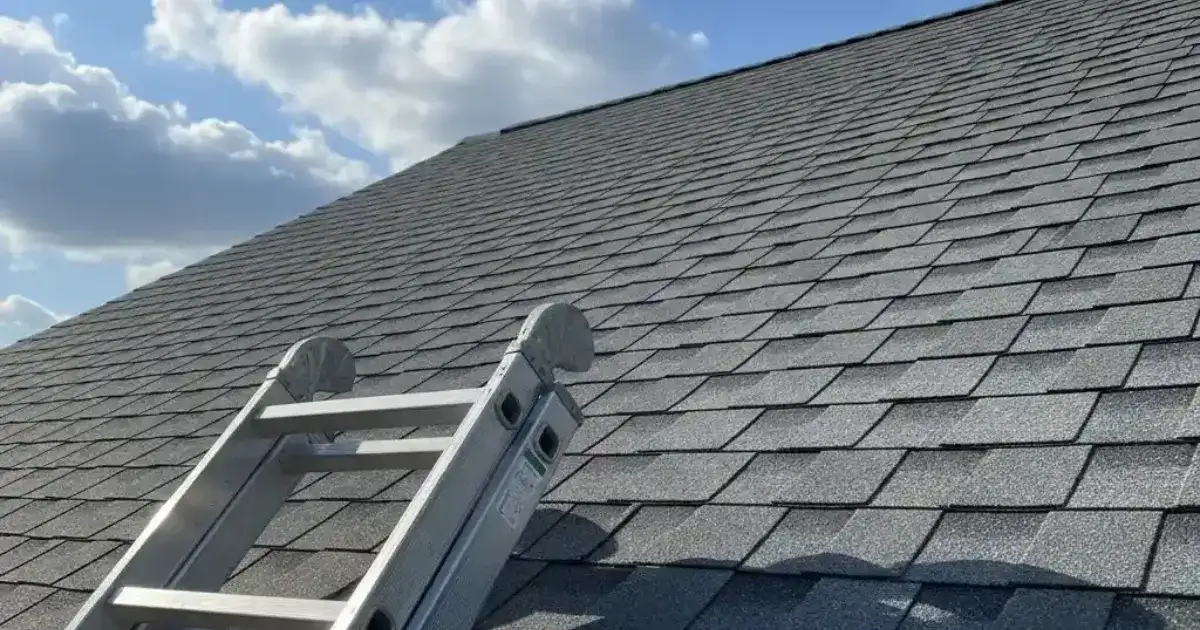Your roof is one of the most important parts of your home. It keeps you safe from rain, wind, and sun every day. But many homeowners don’t notice roof issues until it’s too late. Over time, asphalt shingles can crack, curl, or lose their strength due to weather exposure. Knowing when it’s time to replace asphalt shingle roof can save you from costly repairs later. When shingles wear out, they fail to protect your home effectively. Small leaks may turn into big water damage problems. That’s why recognizing early warning signs can help you take action before things get worse and your home safety is at risk.
Shingles Are Cracking or Curling
One of the first visible signs of a failing roof is damaged shingles. When shingles start curling at the edges or cracking down the middle, it’s a strong signal that replacement is near. This happens because of long exposure to heat, cold, and moisture. Over time, the asphalt layer breaks down and loses flexibility. Curled shingles can no longer lie flat, which allows water to seep under them easily. Cracked shingles can lead to leaks inside your home’s attic or walls. If several shingles show damage, it’s time to consider roofing replacement by AGP Drywall. Ignoring cracked shingles can cause serious structural issues later. Always inspect your shingles after heavy storms or high winds for visible curling or cracking signs.
Granules Are Missing From the Shingles
Another warning sign you should not ignore is missing granules. Asphalt shingles are covered with small protective granules that help resist UV rays. When those granules fall off, the shingles begin to age much faster. You might notice black spots or bare patches on the roof where the surface looks shiny or smooth. These spots show that granules have washed away. Missing granules reduce the roof’s ability to reflect sunlight, making your home hotter during summer. You might even find loose granules in your gutters after rainfall. Once shingles lose too many granules, they can’t protect your home effectively. That’s a strong sign you need to replace asphalt shingle roof before major leaks start forming and damage spreads throughout your house interior.
Leaks and Water Stains Inside the Home
If you start seeing brown stains or damp spots on your ceiling, don’t ignore them. Water stains are one of the clearest signs of a roof leak. Sometimes, leaks start small and are hard to spot at first. But as they grow, they cause mold, mildew, and even weaken the ceiling structure. When your roof has worn-out shingles, water can easily seep through and reach the attic or walls. You might even notice dripping during heavy rain. This kind of damage won’t stop on its own. Repairing the interior damage is only a temporary solution. The real fix is to replace asphalt shingle roof to stop future leaks completely. A new roof will seal your home properly and protect it from any future water issues effectively.
Shingles Are Missing or Falling Off
Another major warning sign is when shingles start disappearing from the roof. Missing shingles leave gaps where water can easily enter. Heavy winds or storms often cause this problem when shingles have lost their grip. If you notice loose or missing pieces scattered in your yard after a storm, that’s a red flag. A healthy roof should stay intact even in tough weather conditions. When shingles fall off, it means the roof’s adhesive is failing. This can lead to serious water leaks and insulation problems inside the home. If the damage spreads over a wide area, the best option is to replace asphalt shingle roof immediately. A full replacement will prevent more shingles from blowing away and protect your home long term.

Roof Age and Sagging Spots
Even if your roof looks fine, age is still a big factor to consider. Asphalt shingle roofs usually last around 20 to 25 years depending on weather and maintenance. If your roof is older than that, it’s nearing the end of its life. Another critical sign is sagging. A sagging roofline shows that the structure underneath is weakening due to moisture or rot. This is very dangerous because it can collapse if not fixed in time. If you see dips or uneven spots on your roof, call a professional for inspection right away. Older roofs lose their ability to protect your home efficiently. Replacing it before serious damage happens is always a smarter and safer choice for homeowners everywhere.
Rising Energy Bills
You may not think your energy bill connects to your roof, but it does. A damaged or worn-out roof allows heat to escape during winter and traps heat inside during summer. This forces your HVAC system to work harder, increasing your monthly energy costs. If you notice sudden rises in energy bills, your roof may no longer be insulating your home properly. Shingles that lose granules or become cracked can’t reflect sunlight well anymore. Poor ventilation in the attic can also make things worse. To save money in the long term, it’s wise to replace asphalt shingle roof when they start affecting your home’s energy efficiency. A new roof helps maintain stable indoor temperatures year-round efficiently.
Conclusion
Your roof protects your home every single day from harsh elements. Knowing when it’s time to replace asphalt shingle roof is essential for keeping your house safe and dry. Ignoring early warning signs can lead to costly damage and bigger repair bills. Always inspect your roof for curling shingles, leaks, missing granules, and sagging areas. If your roof is old or showing multiple signs of wear, don’t delay replacement. A new roof ensures strong protection, better energy savings, and peace of mind for years to come. Taking action early helps you avoid bigger problems and keeps your home in perfect shape always.


 Blog
Blog